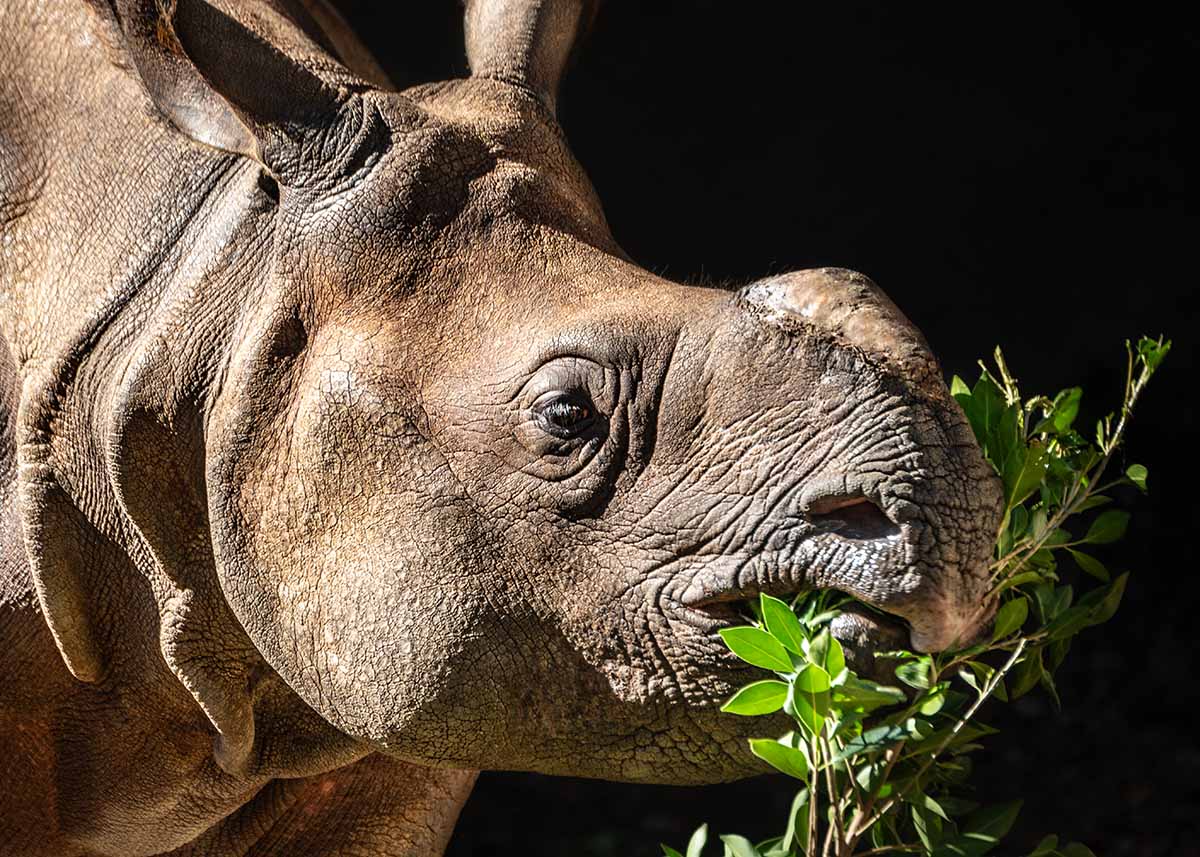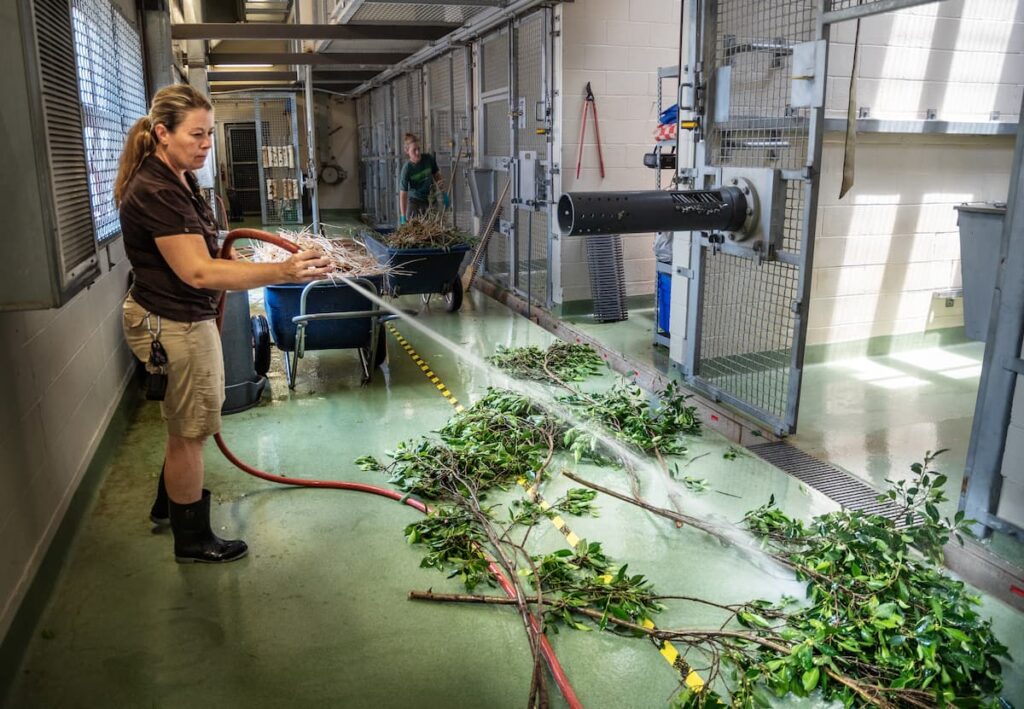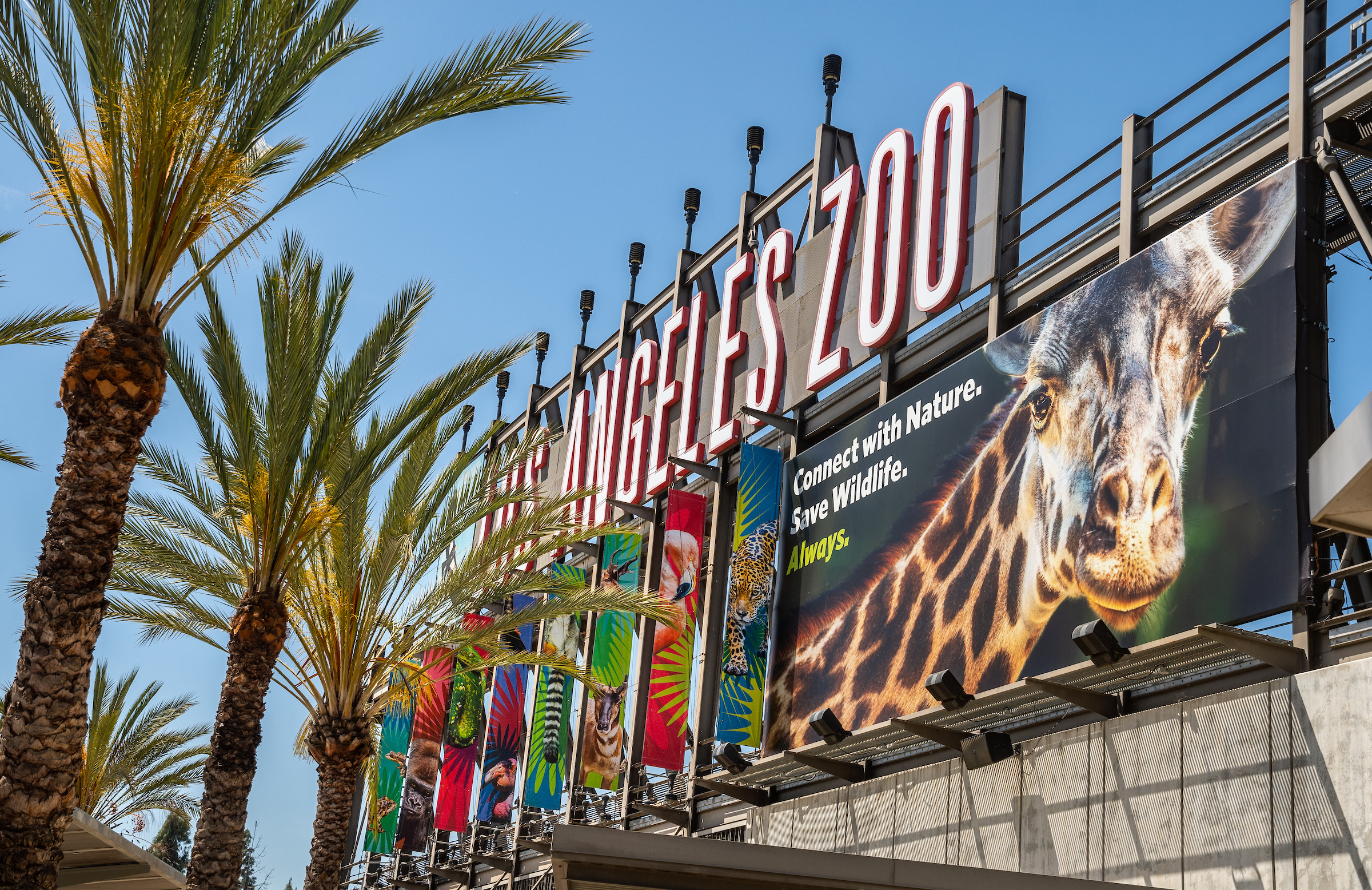
By Beth McClellan and Paula Riggin
Animals who call the Zoo home eat a wide variety of foods. Taste, texture, nutrition, and variety are all managed by Zoo Nutritionist Emily Schwartz, and among the fresh food enjoyed across many species are cut branches with leaves, soft shoots, flowers, and fruit called “browse.” Browse is closest to (and in many cases, exactly the same as) what animals would find for themselves in the wild. At the Zoo, browse is provided by keepers. In fact, the Los Angeles Zoo is fortunate because our Mediterranean climate allows many of the plants the animals prefer to be locally grown rather than shipped in. Our Animal Care staff cuts animals’ favorite browse daily or weekly from plants in the Zoo, around Griffith Park, next door at the golf course, and throughout many cities in Los Angeles County.
So what kinds of trees do the animals love best? Generally, the new growth at the tip of the branch is the animals’ favorite part because it contains the most moisture and tender leaves. However, there are some specific preferences, too. You’ll find Cape honeysuckle in the colobus monkey habitat; Chinese elm with the markhors, pudus, and elephants; and even prickly pear cactus with the peccaries and tortoises!
Koalas, of course, enjoy eucalyptus leaves. Eucalyptus leaves are poisonous, so few animals can eat them, but koalas have special adaptations to deal with the toxins (the toxins still make koalas sleepy, though, so when you spot them in their habitat, they’ll mostly likely be snoozing). Out of around 700 species of eucalyptus trees, commonly called gum trees, koalas prefer only about 30 types. Currently the koalas at the Zoo, including the new joey, prefer flooded gum and river red gum eucalyptus but are also enjoying some lemon-scented gum. The taste of the leaves can change with the season, so providing variety is important. About 1,000 eucalyptus trees per koala are needed to give them choices and keep them happy. Around eight bunches of at least four different types of fresh eucalyptus are offered every 24 hours to the koalas in our care. Picky eaters, the koalas generally consume about 50 percent of what is offered. That uneaten eucalyptus browse is recycled to the kangaroos, wallabies, and wombats, who nibble on the bark.

Gorillas have preferences, too. You’ll see Kelly, the family silverback, with a branch draped across his back or using a stick to forage for food, and four-year-old Angela waving a branch and twirling around. What is that plant that acts like a cape, a tool, and a toy? It’s a branch from a ficus or fig tree. Fig leaves are rich in calcium, iron, phosphorus, manganese, sodium, potassium, vitamin A, vitamin B1, and vitamin B2. Fig bark contains fiber as well as starches, vitamins, and minerals. Of course, the fruit is tasty too, but gorillas in our care don’t get a lot of fig fruit because it is high in sugar, so they eat the leaves and bark. When only a stick remains, they trade it with the Animal Care staff to get another treat.
Orangutans, elephants, hornbills, and butaans (Gray’s monitor lizards) love fig trees too, and fig trees grow throughout the Zoo for browse. Favorite species include the rusty leaf fig (in Reggie the alligator’s exhibit and the Ferraro Rose Garden), Indian laurel fig (in the Cycad Garden), and the Moreton Bay fig (located at the Fork in the Road and by the chimpanzees).
Carob is also popular throughout the Zoo. You may have noticed keepers providing carob seed pods to chimpanzees. The long, leathery pods are used for enrichment to help keep the chimps active and engaged. Carob leaves are also a favorite of the Chinese goral and pudu. Kangaroos enjoy the carob bark, which serves as a type of natural floss to keep their teeth clean; macropods can be prone to tooth issues, so the kangaroos get this browse almost every night. You’ll find carob trees near the LAIR and on the path to the jaguars.
So next time you visit an animal’s habitat, check out the browse, and know that “just browsing” is more important than it seems.

